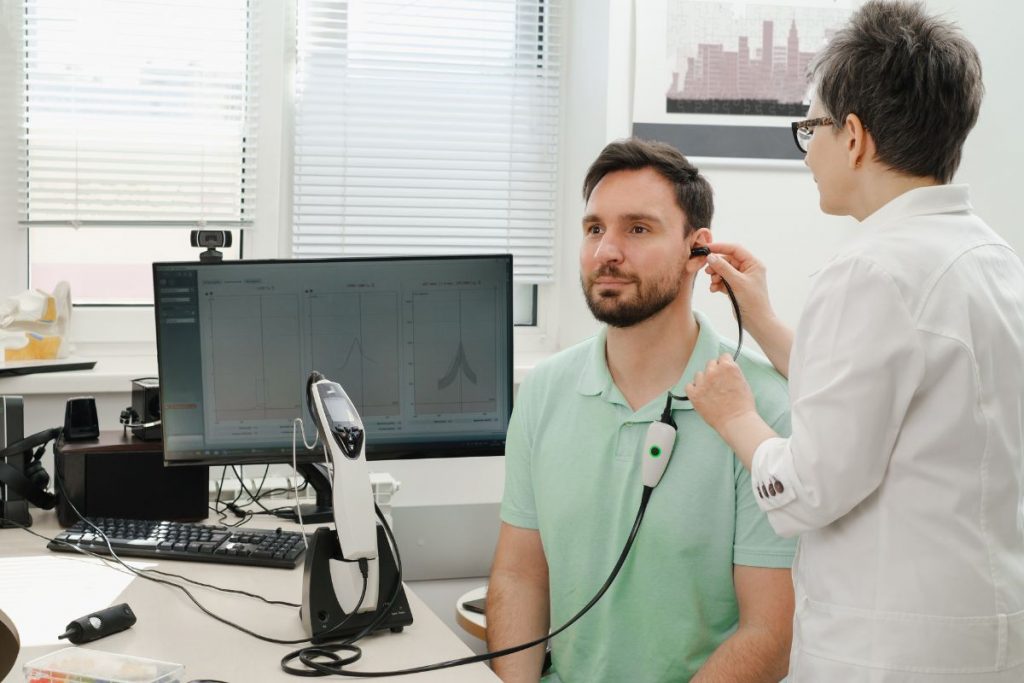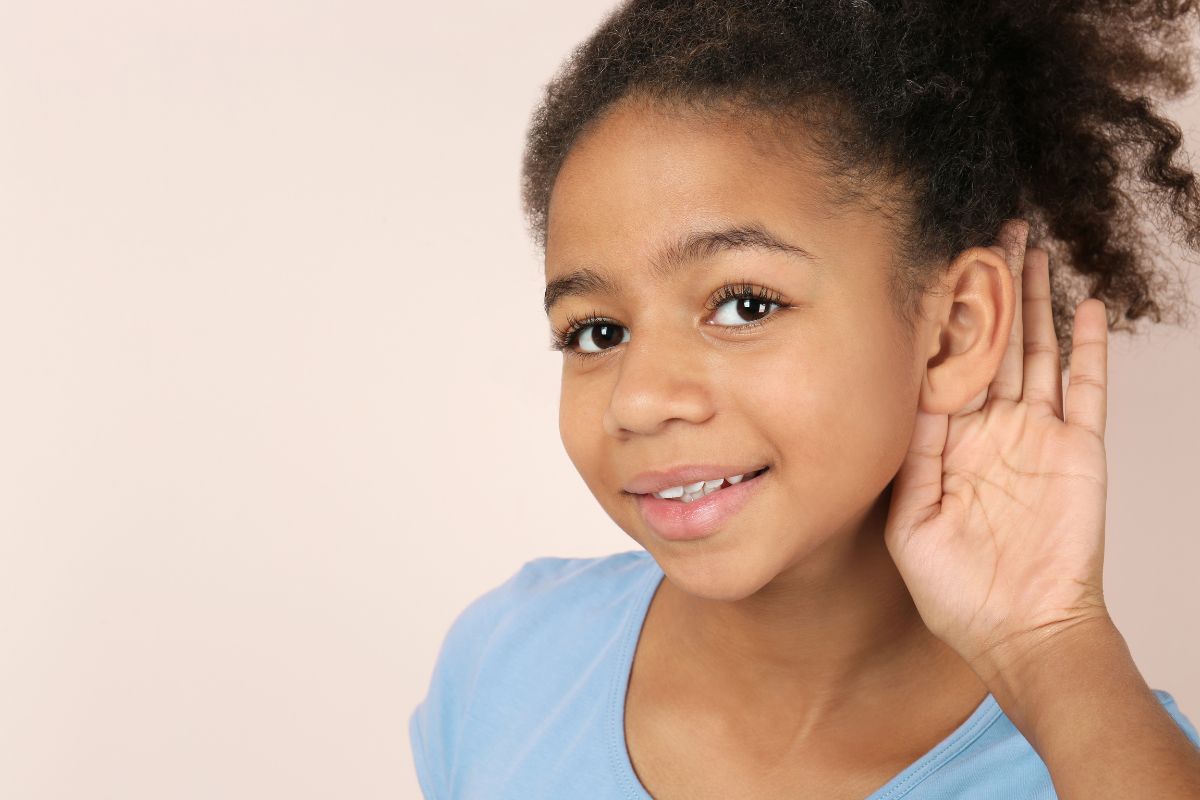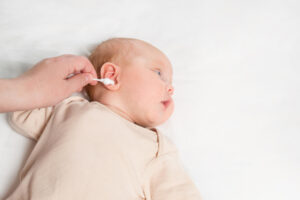Introduction to Hearing Conservation

In the discourse presented here, Dr. Shree Rao provides information about Hearing Conservation Tips for Different Environments. She is the Best Doctor for Cochlear Implants.
Hearing conservation is a vital aspect of occupational health and safety, aimed at protecting individuals from noise-induced hearing loss (NIHL) and other auditory disorders. This discipline encompasses various strategies and practices designed to minimize exposure to hazardous noise levels and preserve auditory health in noisy environments.
Under the guidance of experts like Dr. Shree Rao, the importance of hearing conservation is underscored, emphasizing proactive measures to prevent hearing loss and promote overall well-being. Through a combination of engineering controls, administrative measures, and personal protective equipment (PPE), individuals can mitigate the risks associated with occupational noise exposure and maintain optimal hearing function throughout their lives.
By raising awareness about the significance of hearing conservation and providing practical guidance on implementation, this introduction sets the stage for a comprehensive understanding of the principles and practices that underpin this critical aspect of occupational health and safety. Through collective efforts and informed decision-making, individuals and organizations can work together to safeguard auditory health and preserve the precious gift of hearing for generations to come.
Industrial Environments
In industrial environments, workers are often exposed to high levels of noise generated by machinery, equipment, and manufacturing processes. These noise hazards pose significant risks to hearing health if not properly managed. To mitigate the risk of noise-induced hearing loss, it is essential for employers to implement comprehensive hearing conservation programs. This includes providing workers with appropriate personal protective equipment (PPE), such as earplugs and earmuffs, to reduce their exposure to harmful noise levels. Additionally, engineering controls, such as sound barriers and noise enclosures, can be implemented to minimize noise emissions at the source. Regular monitoring of noise levels and conducting hearing screenings for workers are also essential components of effective hearing conservation efforts in industrial settings. By prioritizing the protection of employees’ hearing health, employers can create safer and healthier work environments while reducing the incidence of noise-related injuries and illnesses.
Construction Sites
Construction sites are notorious for their high levels of noise, stemming from various activities such as heavy machinery, power tools, and construction equipment. These loud environments pose a significant risk to workers’ hearing health if not properly managed. To address this concern, it is crucial for construction companies to implement robust hearing conservation measures.
Workers should be provided with appropriate personal protective equipment (PPE), including earplugs or earmuffs, to minimize exposure to hazardous noise levels. Employers should also prioritize the use of quieter equipment and machinery whenever possible and implement engineering controls such as sound barriers or enclosures to reduce noise emissions.
Regular monitoring of noise levels throughout the construction site and conducting routine hearing screenings for workers are essential components of effective hearing conservation efforts. By promoting awareness of the risks associated with noise exposure and ensuring compliance with safety protocols, construction companies can create safer work environments and protect their employees’ hearing health.
Manufacturing Facilities
Manufacturing facilities often generate high levels of noise due to the operation of machinery, production lines, and industrial processes. This continuous exposure to loud sounds can pose a significant risk to workers’ hearing health if not properly managed. To mitigate this risk, manufacturing facilities must implement robust hearing conservation measures.
Workers should be provided with appropriate personal protective equipment (PPE), such as earplugs or earmuffs, to reduce their exposure to hazardous noise levels. Employers should also invest in engineering controls, such as soundproofing enclosures or barriers, to minimize noise emissions from machinery and equipment.
Regular monitoring of noise levels throughout the manufacturing facility and conducting routine hearing screenings for workers are essential components of effective hearing conservation efforts. Additionally, employers should prioritize employee training and education on the importance of hearing protection and safe work practices in noisy environments.
By prioritizing hearing conservation and implementing comprehensive safety measures, manufacturing facilities can create safer work environments and protect the long-term hearing health of their employees.
Agricultural Settings

In agricultural settings, workers are often exposed to various sources of noise, including farm machinery, livestock, and agricultural equipment. Prolonged exposure to these loud environments can pose significant risks to hearing health if not properly managed. To protect workers from noise-induced hearing loss, agricultural operations must implement effective hearing conservation measures.
One crucial step is providing workers with appropriate personal protective equipment (PPE), such as earplugs or earmuffs, to attenuate the impact of noise exposure. Employers should ensure that PPE is readily available, properly fitted, and worn consistently by workers in noisy environments.
Engineering controls, such as acoustic enclosures for machinery or barriers to block noise propagation, can also help reduce noise levels in agricultural settings. Regular maintenance and inspection of equipment to identify and address sources of excessive noise are essential for maintaining a safe working environment.
Education and training are key components of hearing conservation efforts in agricultural settings. Workers should receive training on the risks of noise exposure, proper use of hearing protection, and the importance of seeking medical evaluation if they experience any symptoms of hearing loss.
By implementing a combination of engineering controls, personal protective equipment, and employee education, agricultural operations can effectively mitigate the risks of noise-induced hearing loss and promote a safer work environment for all workers.
Entertainment Venues
In entertainment venues such as theaters, concert halls, nightclubs, and sports stadiums, noise levels can often reach hazardous levels, posing risks to both patrons and employees. To ensure the safety of everyone in these environments, it’s essential to implement effective hearing conservation measures.
One crucial step is to conduct regular noise assessments to identify areas with high noise levels and assess the risk of hearing damage. This allows venue managers to take appropriate measures to control noise levels and protect individuals from excessive exposure.
Installing acoustic treatments such as sound-absorbing panels, curtains, or baffles can help reduce reverberation and control noise levels within entertainment venues. Additionally, implementing noise barriers or enclosures around loudspeakers or amplifiers can help contain sound and prevent it from spreading to areas where patrons or employees may be at risk.
Providing patrons and employees with access to hearing protection devices, such as earplugs or earmuffs, is another important aspect of hearing conservation in entertainment venues. Signage and announcements can also remind individuals to use hearing protection in areas where noise levels are consistently high.
Educating staff members about the risks of noise exposure and the importance of hearing protection is essential for fostering a culture of safety within entertainment venues. Training programs should cover topics such as the proper use of hearing protection, recognizing signs of hearing damage, and procedures for reporting noise-related concerns.
Transportation Environments
In transportation environments such as airports, train stations, and bus terminals, noise exposure is a significant concern for both workers and passengers. Aircraft engines, train whistles, and bus engines can produce high levels of noise, potentially leading to hearing damage over time.
To mitigate this risk, transportation authorities implement various measures to protect hearing health. This includes conducting regular noise assessments to identify areas with excessive noise levels and taking steps to reduce noise emissions. For example, airports may install noise barriers or use quieter aircraft during nighttime hours to minimize disturbance to nearby communities.
Additionally, employees working in transportation environments are often provided with personal protective equipment (PPE) such as earplugs or earmuffs to reduce their exposure to loud noise. Training programs educate workers on the importance of using PPE correctly and encourage them to report any concerns about noise levels in their work environment.
Passengers are also encouraged to take precautions to protect their hearing while traveling. This may involve using noise-canceling headphones or earplugs during flights or train journeys to reduce exposure to ambient noise.
By implementing these measures, transportation environments can effectively manage noise exposure and protect the hearing health of both workers and passengers.
Office Environments
In office environments, noise levels may not always be as pronounced as in industrial settings, but they can still pose a risk to hearing health over time. Common sources of noise in offices include ringing phones, chatter among colleagues, office equipment such as printers and photocopiers, and HVAC systems.
To promote hearing conservation in office settings, employers can implement various strategies. This may include designing office layouts to minimize noise transmission, such as using cubicle partitions and acoustic panels to dampen sound. Additionally, providing quiet areas or designated “noise-free zones” where employees can focus on tasks without distraction can help reduce overall noise exposure.
Encouraging the use of headphones or earplugs in situations where noise levels are particularly high, such as during meetings or when using noisy equipment, can also be beneficial. Employers can provide noise-canceling headphones or disposable earplugs to employees who request them.
Furthermore, regular maintenance of office equipment and HVAC systems can help prevent excessive noise levels from developing. Employers should also educate employees about the importance of protecting their hearing and provide training on the proper use of hearing protection devices.
Conclusion
In conclusion, maintaining auditory health across various environments is paramount to preserving overall well-being. By implementing the appropriate hearing conservation measures tailored to specific settings, individuals can effectively mitigate the risks of noise-induced hearing loss (NIHL) and other auditory disorders. Under the guidance of experts like Dr. Shree Rao, individuals and organizations can prioritize auditory health and safety, ensuring optimal hearing function for enhanced quality of life. Through proactive measures and ongoing education, the collective effort to promote hearing conservation contributes to a healthier and more productive society.

Why consult EarSurgeon, Dr. Shree Rao?
Dr. Shree Cuddapah Rao is acclaimed as one of the best pediatric ENT specialists in Hyderabad. With 10+ years of deep domain experience in the field of ENT, she is the director at Dr. Rao’s ENT Super Specialty Hospital. She underwent specialized training in Rhinoplasty / Facial Plastic surgery at Singapore General Hospital, Singapore. She also underwent advanced training in cochlear implant surgery under Padmashri Dr. Milind V Kirtane and had a Fellowship in a cochlear implant. Having performed over 200 successful cochlear implants for patients worldwide, Dr. Shree Cuddapah Rao is also the recipient of several prestigious accolades in the domain of ENT. Dr. Shree Rao is one of the best ent doctor in hyderabad, to book an appointment click here.
Are you looking for
then you have landed at right place!







